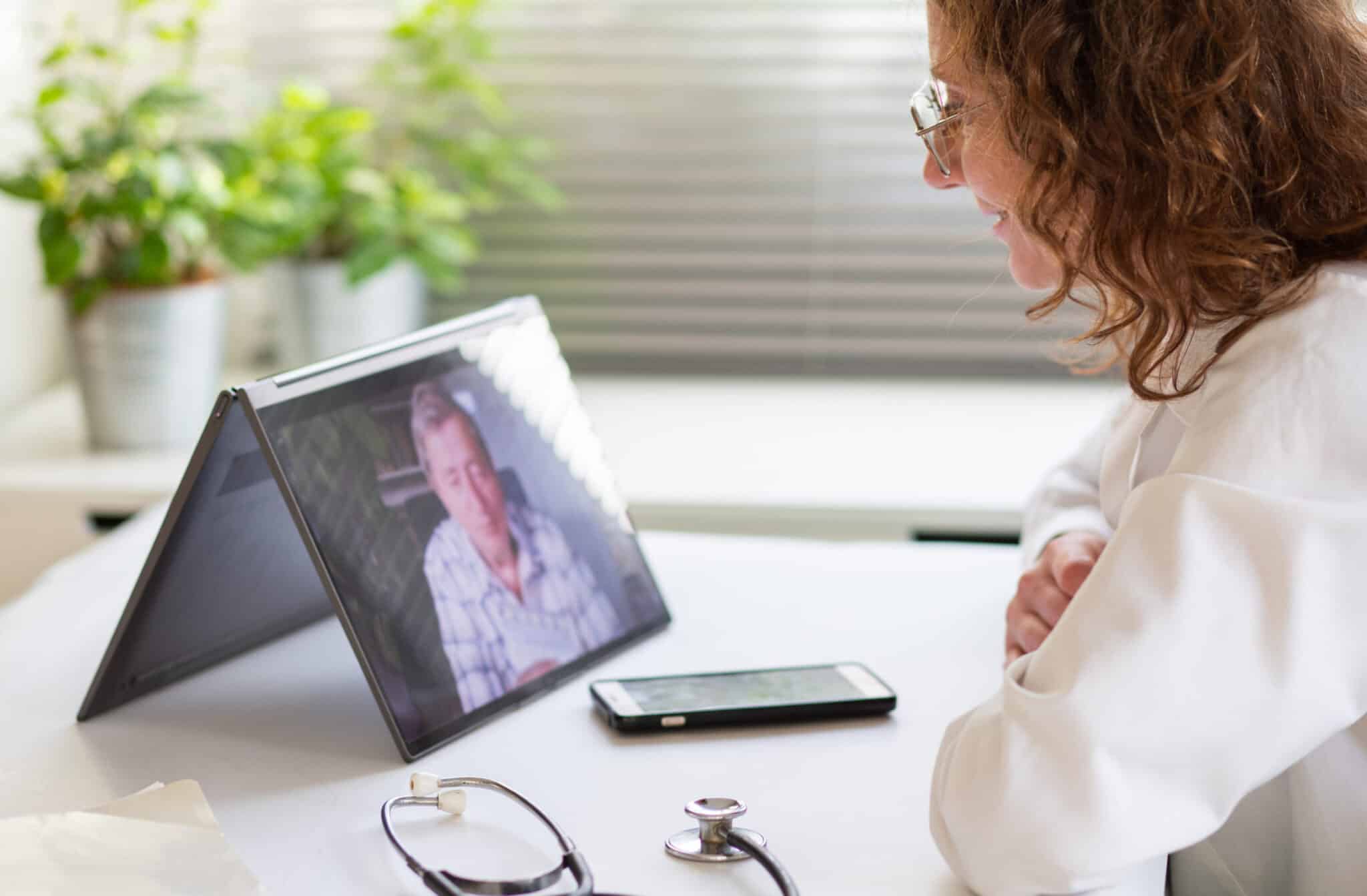Effective use of telehealth is not simply about proper use of the technology. It’s about maintaining a human touch — despite the remote nature of digital visits. Patients deserve as much attention, sensitivity to unspoken needs, and concern for outcomes, whether they are streaming a video or sitting in an exam room. Often, this is the cause of patient concerns about telemedicine.
So, how can physicians practice empathy as care increasingly migrates to digital environments?
Addressing Patient Concerns with Empathy
Recently the AMA brought together Dr. Adrienne Boissy, Dr. Jen Horonjeff, and Stacy Lloyd, in a panel moderated by Dr. Todd Unger for their regular “AMA COVID-19 Update” video series. Their discussion focused on making empathy a primary goal during the ongoing integration of telehealth within primary care.
Timothy Smith, Senior News Writer at the American Medical Association summarized the discussion of patient concerns about telemedicine:
“Adopting telemedicine now, is, and will be, essential for clinical practices for the foreseeable future, for delivering care and as a source of revenue (once seen as supplemental, increasingly becoming vital). Some patients may struggle more measurably with this form of care, but all patients will require empathy in telehealth delivery for the best possible outcomes. As physicians look to create meaningful connections in their telehealth encounters, what roles should patient input and feedback play?”
Dr. Adrienne Boissy, chief experience officer at Cleveland Clinic Health System, who has presented previously on empathy and healthcare for a TED talk, adds “If you really think about empathy at an operational scale — which is making life easier for patients, reducing suffering, reducing time spent waiting — digital tools have enormous potential.”
Empathy can be defined as imagining another person’s experience. When offering the options of either, Dr. Boissy says, “in-person or virtual, they’ll say, ‘I need to see you.’”
Telemedicine for Primary Care — Not Substitute Care
Ultimately, if telehealth is approached as the best means of supporting a patient outcome, rather than a fallback option only because in-person visits aren’t available, then considerations for how to optimize the experience emerge.
The digital experience is much more than videoconference examinations or consultations, which was discussed by the AMA panel:
“COVID is changing everything from the way we check-in patients, home check-in, home co-sign, home co-pay” and so on. These nascent digital tools and processes can ease pain points for patients — again, approaching these with patient-centered empathy rather than business-centered necessity leads to a better outcome for all.”
Telehealth has unparalleled potential for improving health, including increased access to care. Consumers who require urgent response also prefer telemedicine to travel (or waiting until open office hours). For underserved regions, telehealth solves the problem of a paucity of specialists, nationwide.
Providers and hospitals are still learning how to best deploy digital solutions to improve patient care. However, there is reason to be optimistic about telehealth adoption. Stacy Lloyd says that according to a study by the AMA, physicians are more likely to adopt tools if they enhance the relationship with a patient, and if a tool “keeps them safe and reduces burnout and pain and burden on their end.”
Addressing patient concerns could improve cognitive health
As Dr. Boissy says in the conversation, being able to figure out which tools are the right tools for the right relationship, and the right person, is a responsibility of the provider.
Neurocognitive diseases exacerbated by reduced social contact and isolation crystallize the need for greater access and a “more human” user experience for cognitive care. Telemedicine solutions can offer both, so long as the user experience is based on an empathetic understanding of the realities of how a patient interacts with the remote testing tool and its necessity in delivery of care and monitoring of neurocognitive health.
Remote cognitive testing using BrainCheck provides an identical experience to what patients experience in clinic. Whether used for remote or in-clinic cognitive assessment, the platform is fast, accurate, and easy to use. And recent research has shown BrainCheck to be equally effective when used remotely.
The importance of cognitive care hasn’t changed in the face of the pandemic. But how practices provide care has. With a focus on empathy and BrainCheck, practices everywhere can implement telemedicine and continue providing this essential care.


